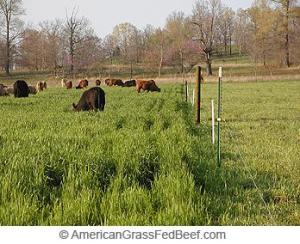Our farm is dedicated not just to responsible, healthy, accessible food, but also to changing the very model that our country uses to produce and consume food. We’ve said before that being certified organic doesn’t go far enough to affect this change; in this article we take a look at a few more reasons that eating local beats both organic and conventional. And at the end, we give you a sneak preview of what our “dream” food model looks like.
1. Local really is more nutritious
An organic controversy exploded in 2012 when a Stanford University study asserted that there’s no meaningful difference in the nutritional content of organic and conventionally raised foods. Stanford, along with many other food scientists and supporting institutions, make the claim that the only substantial drivers of nutritional content in food are genetics and freshness. If you take two seeds from an identical heirloom plant, raise one on a conventional farm, the other on an organic farm, and harvest and eat them at the same time, there will be virtually no difference between the two.

One will become a testament to the tasteful application of makeup and eyeliner, and the other will become Maggie Gyllenhaal.
Supporters of organics naturally (hehe) fired back, citing everything from the university’s relationship with agro-giant Cargill to alleged technical flaws in the study itself. Importantly, however, critics of the study did not attack its underlying premise: that genetics and freshness are what really matters when it comes to nutritional content.
When you make the decision to ignore the labels, buy local, and source all your food from a nearby ecological farm, this controversy immediately loses meaning for you. If you’re buying heirloom produce from a farm less than an hour away, you’re pretty much guaranteed two things: 1.) you’re getting plant genetics at least as good as what you’d find in an organic market, and 2.) you’re getting your produce at the peak of freshness, especially if you visit the type of farm that lets you pick produce yourself. The only way to get fresher food would be to disguise yourself as a cow during the day, graze the fields with the rest of the herd, and hope the farmer doesn’t notice.
2. Local really does taste better
It’s not hard to find people – especially those who patronize expensive restaurants – that will insist that organic food tastes hands-down better than conventionally raised food. Unfortunately, those people would be proven wrong by a slew of blind taste tests in which people truly can’t tell the difference between stuff that’s grown in a chemical-bound psedo-soil and compost-pampered supersoil.
Much like nutrition, taste is largely the effect of freshness and genetics. For eggs, meat, and dairy, the inputs that create them are also a very significant factor… but one whose positive effect on the taste of the food is correlated with freshness.
As great as organic farming is compared to its conventional counterpart regarding environmental impact, it gleefully shares conventional ag’s most glaring structural problem: centralized distribution. This model of distribution underlies the efficiency that some would argue is modern agriculture’s biggest strength, but it also underlies its biggest weaknesses: the ecological compromises demanded by farming for economies of scale, and products whose nutrition and taste suffer from shipping (to distribution facilities and markets) and waiting (in markets to be bought).
Do you find it strange that you can buy organic sweet corn and vine tomatoes at health food markets in January? If you don’t, then you should. That sweet corn and that big red ‘mater, being more than six months out of season, are both going to taste like hot-house garbage. If you buy from an ecological farm, however, this isn’t going to be a problem because an eco-farmer worth her salt will not grow things out of season, even in a greenhouse. Shopping for groceries at such a farm ensures that you’re buying food in season and at the peak of freshness, which is the ONLY way to guarantee your food is at the height of its nutritional content and taste.
3. Local really is best for the environment
Conventional and organic farming have something else in common besides centralized distribution: they’re founded on the idea that you have to fight nature to produce enough food for civilized society. The only difference between the two is that organic farmers are following the rules of gentlemanly warfare, while the conventional farmers are whipping out the nukes and mustard gas.
To be sure, organic farming is much gentler on the environment than conventional farming. The “Three Cs” of organic farming are compost, cover crops, and crop rotation; together, these are intended to minimize the effects of farming on the environment and reduce risks to public health. The first “C”, compost, provides natural soil fertility without frying soil life the way synthetic fertilizers do. The second, cover crops, prevents soil erosion and runoff pollution while improving soil structure and nutrient content after cash crops are harvested. The third, crop rotation, interrupts cycles of pests and diseases by taking away their food sources.
The Three C’s, unfortunately, do not address organic agriculture’s reliance on monocultures. A monoculture is what you get when you have a whole bunch of the same plant (or animal) covering a large area. This is something you almost never see in nature because, in nature, such a state can’t persist for very long. If a 50 acre field were to spontaneously sprout nothing but corn, then the beetles and armyworms would soon follow. With a gigantic food source and no habitat for their predators, these pests would reproduce explosively until all the corn was gone, at which point the they would starve to death. Their decaying bodies and rotting corn husks would cover the soil with new organic matter while the occasional breeze or four-legged creature would deposit various seeds from elsewhere. Over time, a new and balanced ecosystem would develop – one that would invariably be a polyculture rather than a monoculture. I won’t say that monocultures aren’t “natural” since “natural” is such a slippery term. But I will say that we’re swimming against nature’s current when we use monocultures, and that’s a dangerous proposition when we’re relying on them to stay alive.
If there’s one thing your small, local family farm probably doesn’t have, it’s a 50 acre cornfield. These little farms generally use hoophouses and/or raised garden beds to produce plants in polycultures that are much more environmentally sound. And while these fruits and veggies don’t provide the staples we rely on from corn and soy, there are permaculture farms coming online using tree guilds to replace them both affordably and with ecological soundness. Most of these operations are small family farms that need your patronage in order to succeed.
4. It’s the only way to make responsible food affordable
America’s food model is broken because it demands an interface between the consumer and the producer in the name of efficiency and centralized profit.* Proponents of this model will argue that such ruthless efficiency is necessary in order to meet demand; a dubious claim considering that America trashes nearly half it’s food.
The organic movement, God bless it, does not address the structural flaw in this model. It instead funnels food into the same broken system as its conventional adversary (or parent company) using a production method that’s much less efficient. With its misguided focus on markets and monocultures, organic farms fight a relentlessly uphill battle against the efficiency of conventional farming’s chemical marvels and the inertia of mother nature’s ecological inclinations. The result? The most difficult, expensive food on planet Earth.
But in spite of the cost, farmers markets and agritourism are booming at the same time unprecedented public outrage is being directed at GMO, feedlots, and big agribusiness. The enormous demand for organic, relative to its supply, is one of the drivers of its high price. If we could only lower the price of responsible food to make it accessible to the average person, the sustainable food movement would be on its way to fulfilling its mission of saving the world by feeding it. This is where your local permaculture farm comes in.
Permaculture farms are those that intensively mimic natural systems to produce food that’s both ecologically sound and affordable. The affordability stems from a number of things: reliance on perennials that only need to be planted once; emphasis on forage rather than feed for livestock; selection of locally-adapted plants and animals that require minimum human intervention; focus on a hyperlocal customer base that does most of the harvesting; adoption of multistory agriculture (fungi, ground covers, tall annuals, bushes, and trees occupying the same space) to improve efficiency; providing the diversity of products that allows the farm to replace the supermarket.
Taking central Virginia as an example, the new agricultural model here would have 1,400 small (20 – 30 acres) plantations set up near population centers, each providing food for the 160 or so people living with the immediate vicinity of that farm. People would go to these farms to do most of their food shopping; the Whole Foodses and Harris Teeters would be for the things you can’t get locally – coffee, spices, citrus, etc. The time a farmer would ordinarily spend every year planting, cultivating, spraying, harvesting, shipping, etc. would instead be spent on value adding (e.g. milling wheat into flour, grinding corn into hominy, smoking bacon, baking bread) and surveying the neighborhood to see what products her customers want more or less of.
This model doesn’t exist yet, but it can in your lifetime. All you have to do is make a commitment to cultivate a relationship with a local farmer, make a commitment to buy from her as often as you can, and of course stay tuned to our website as we work to make this model a reality for everyone.
Chris Newman
Sylvanaqua Farms, Earlysville VA
*Before my more conservative readers accuse me of Marxism, please know that I’m not a proponent of socializing or nationalizing food production (notwithstanding charity). Farmers and those who own farms should enjoy comfortable lives financially to the extent their talents will allow them to steward the land responsibly. It is another matter entirely for Monsanto to advocate for market-divorced commodity subsidies, soil-killing chemicals, seed patents, and a factory farm system that brutalizes both farmer and animal… all in the name of its stock price and at the expense of literally everyone in the world.














